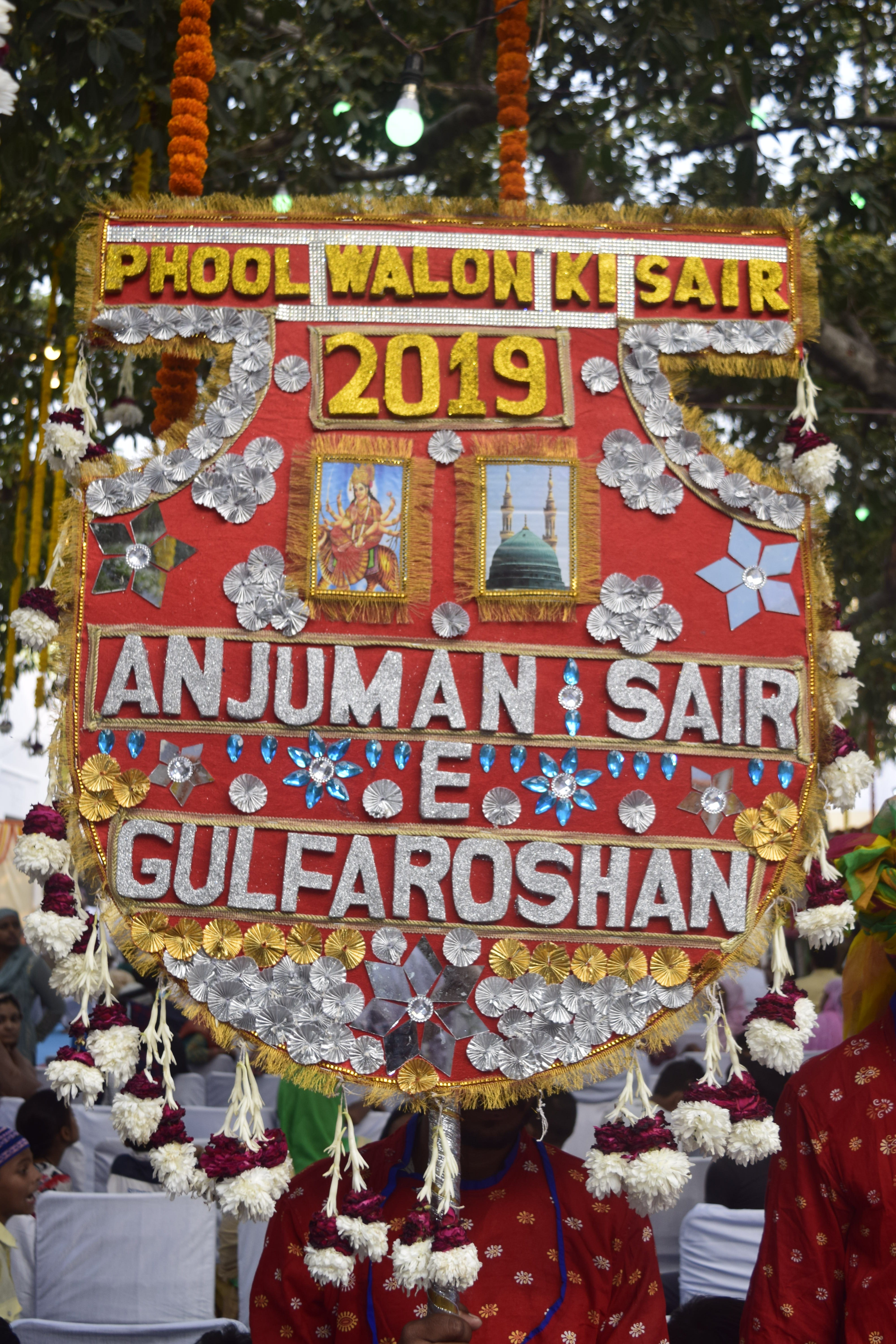
Phool walon ki sair (Procession of the Florists) is one of the oldest public festivals held annually in Delhi. The origin of this festival goes back to the early decades of the 19th century during the rule of the penultimate Mughal Emperor, Akbar Shah II (1806-1837). The festival is held in Mehrauli, one of the seven ancient cities that make up Delhi, after the monsoon season. In contemporary times, the festival is organised by the civil society organisation Anjuman Sair-e-Gul-Faroshan. Conducted over the course of seven days, the festival aims to promote communal harmony among Hindus and Muslims.
The contemporary border of Delhi encloses within itself seven historical cities. Together, they have seen the rise and fall of multiple empires and dynasties. Apart from being the capital, Delhi is also a city of stories and one such story is about the last days of the Mughal Empire and the beginning of Colonial rule. The story of Phool walon ki sair binds multiple histories of Delhi across different timelines. It connects Shajahanabad — the Mughal seat of power — to the legends of the Mahabharata. It connects the old city of Mehruali — the seat of power of the last Tomar kings and the first dynasty of the Delhi Sultanate — to today’s New Delhi at Raisina Hill. It also connects spiritual power with temporal power.
At the centre of the story are two places of worship belonging to different communities: the dargah of Bakhtiar Kaki and the temple of Yogmaya. The Yogmaya temple finds its roots in the events of Mahabharata. Yogmaya is the elder sister of Krishna, who fled from the grip of her maternal uncle. It is believed that after the end of the Great War, Krishna brought the victorious pandavas to the Yogmaya temple to seek her blessings. Qutbuddin Bakhtiar Kaki was a great Sufi mystic, a disciple and spiritual successor of Moinuddin Chisti — the Persian Sufi mystic who settled in India. According to the Sufi tradition of India, Bakhtiar Kaki is considered the highest-ranking Sufi saint of Delhi. He was held in high esteem by the then ruler of Delhi, Illtutmish, and later by the Lodhi Dynasty.
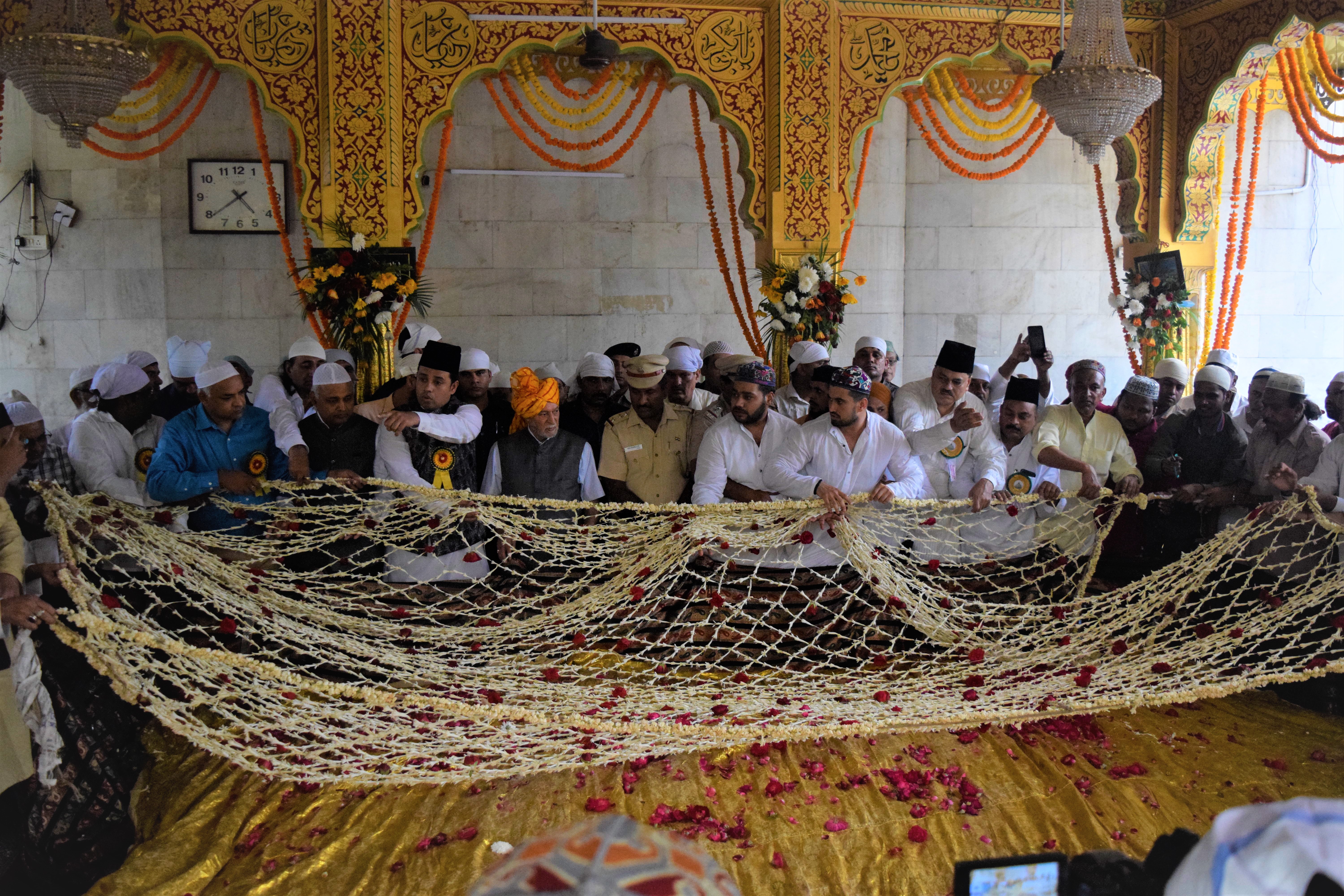
The Story of the Festival
As per the website and booklet of the Anjuman, the widely accepted story consists of historically accurate events. According to it, the origin of the festival is this:
The origin of “Phool Waalon Ki Sair” goes to history during the reign of the Mughal King Akbar Shah II (1808 to 1837). Akbar Shah-II wanted to nominate his younger son Mirza Jahangir as the Heir Apparent (Wali-Ahad) in preference to his elder son Sirajuddin ‘Zafar’. This move was not liked by the then British Resident in the Red Fort, Sir Archibald Seton. Once Mirza Jahangir who was a reckless youth of 19 insulted Seton in open court and called him “Looloo”. The British Resident did not react to this insult as probably he did not understand the meaning of “Looloo”. After a few days, when Mirza Jahangir was merry making on the roof of Naubat Khana in Red Fort, Archibald Seton was coming from the darbar after an audience with the King. Mirza Jahangir fired a shot at the Resident from the roof of Naubat Khana. Seton escaped but his orderly was killed. For this act of his, Mirza Jahangir was exiled to Allahabad under orders of the British Resident.
The mother of Mirza Jahangir, Queen Mumtaz Mahal Begum, was distraught and took a vow that if her son was released from Allahabad and allowed to return to Delhi, she would offer a chaadar of flowers at the Dargah of Khwaja Bakhtiar “Kaaki” at Mehrauli. After a couple of years Mirza Jahangir was released and Mumtaz Mahal Begum went to Mehrauli to redeem her vow. With her the Imperial Court also shifted to Mehrauli and so did the entire population of Delhi. For seven days all sorts of merry making continued at Mehrauli with Jhoolas (swings) in the mango groves, cock fighting and bull baiting, kite-flying, wrestling and swimming bouts. Amidst all this merry making with great pomp and show, a chaadar made of flowers was offered at the Dargah of Khwaja Bakhtiar “Kaaki”. The Mughal King was secular minded and under his orders floral offering in the shape of a floral pankha was offered at the famous Temple of Yogmayaji which is also in Mehrauli, and it became a festival named by the King as ”Phool Waalon Ki Sair”.
Seeing the response of the people and sensing the enthusiasm generated, it was decided that the Festival will be held annually after the rains and people of all communities will offer pankha and chaadar at the Dargah of Khwaja Bakhtiar “Kaaki” and pankha and floral offering at Yogmayaji temple. The Darbar was also shifted to Mehrauli for the seven days of the Festival. The Festival reached its pinnacle during the reign of Sirajuddin “Zafar”, the last Mughal emperor also known as Bahadur Shah “Zafar”. Bahadur Shah “Zafar” went to celebrate “Phool Waalon Ki Sair” even in 1857 when Delhi was under siege of the British. This was the last “Phool Waalon Ki Sair” under the Mughals.

This “official” story was confirmed by the local pandit at the Yogmaya temple, by the caretakers of the darghas and by the local participants. We can also say that the story of Phool walon ki sair, apart from being a historical bridge, is the story of a mother’s love for her son, of deep religious piety and also of — as has been suggested lately — proto anticolonial mobilisation by the last scion of the Mughal Dynasty.
The festival, since its inception, is linked with state and political power. Even after the end of Mughal Empire and with the establishment of British sovereignty, the festival continued to be organised except for a brief interregnum following the rebellion of 1857. In later years, the festival was organised under the patronage of the British Imperial government, but was again stopped during the Quit India Movement in 1942. The festival was restarted in 1961, due to the combined efforts of Jawaharlal Nehru, Yogeshwar Dayal and Noorudin Ahmed with an aim to promote the Ganga-Jamuni Tehzeeb. The scope of the festival was further expanded by Indira Gandhi when she asked other Indian states to participate in the festival. Today, the festival is organised under the active patronage of the AAP-led Delhi government.
Phool walon ki sair 2019
This year the festival was held over seven days with numerous public activities and cultural events along with the participation of political and administrative leaders. These activities included a painting competition for students on the theme of communal harmony; a procession of pankhaas from Chandni Chowk to India Gate, led by traditional musicians; presentation of pankhaas to the Chief Minister, Lieutenant Governor, and other prominent members of the Delhi state administration; and performances by cultural troops.

The location of the activities brought out their syncretic character. On the fifth day, the centre of the festival was the dargah of Qutbuddin Bakhtiar Kaki, where the Lt Governor offered floral chaddar and pankhaas which was followed by qawwali performances. The next day, the activities shifted to the Yogmaya temple, where the Revenue Minister of Delhi offered a floral chhattra (umbrella) and pankhaas to the deity, followed by a programme of Radha-Krishna songs.
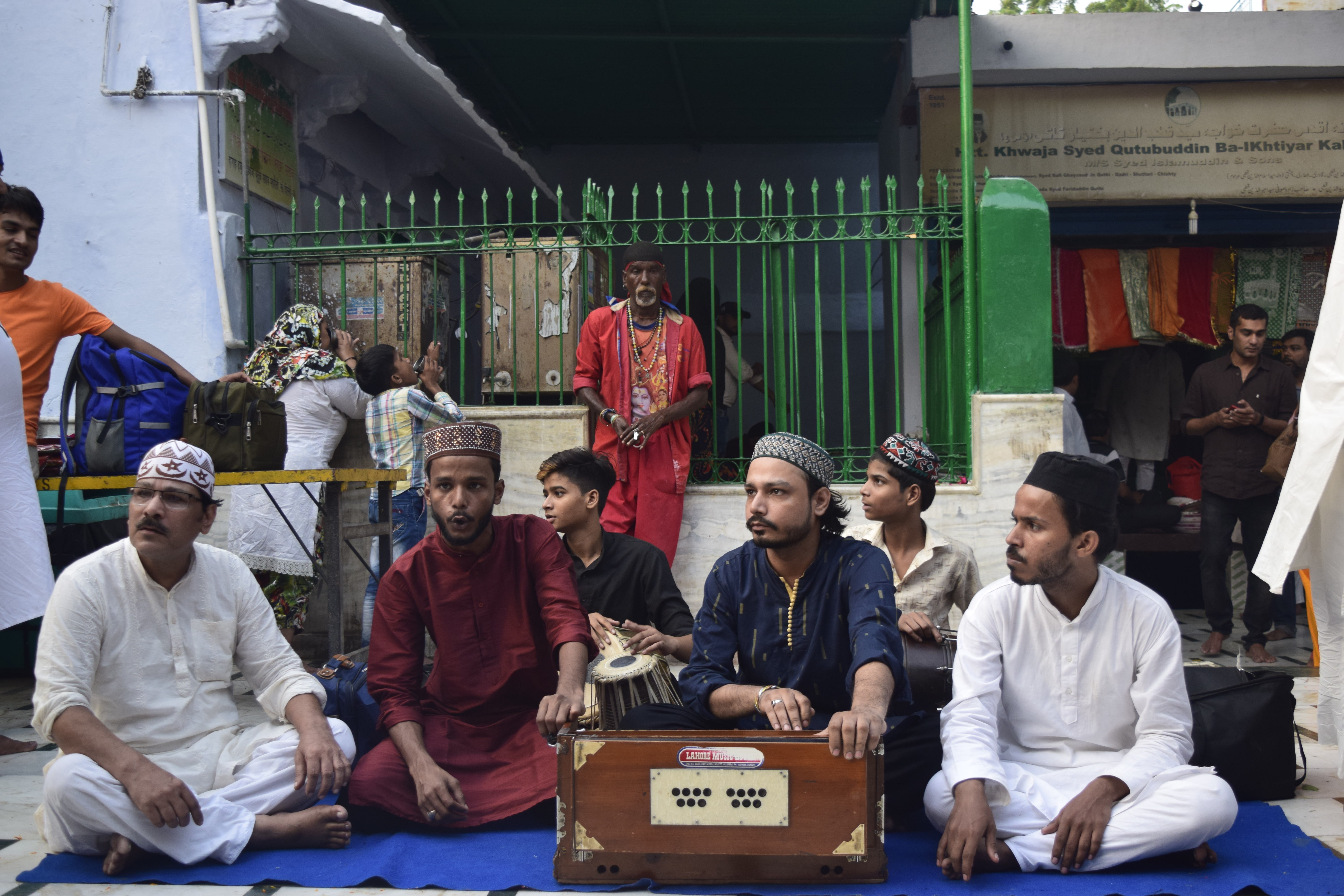
The final day of the festival saw performances by cultural troops from Uttar Pradesh, Himachal Pradesh and Gujarat. The celebrations were held at the Jahaz Mahal in Mehrauli. The office of the President of India also sent two pankhaas as offering. After the performances, a shobhayatra was conducted from the Jahaz Mahal which moved slowly through the congested lanes of Mehrauli Market and later split into two groups. One group proceeded towards the dargah and the other group towards the Yogmaya temple. The pankhaas gifted by the participating states and the President were presented at both places of worship.
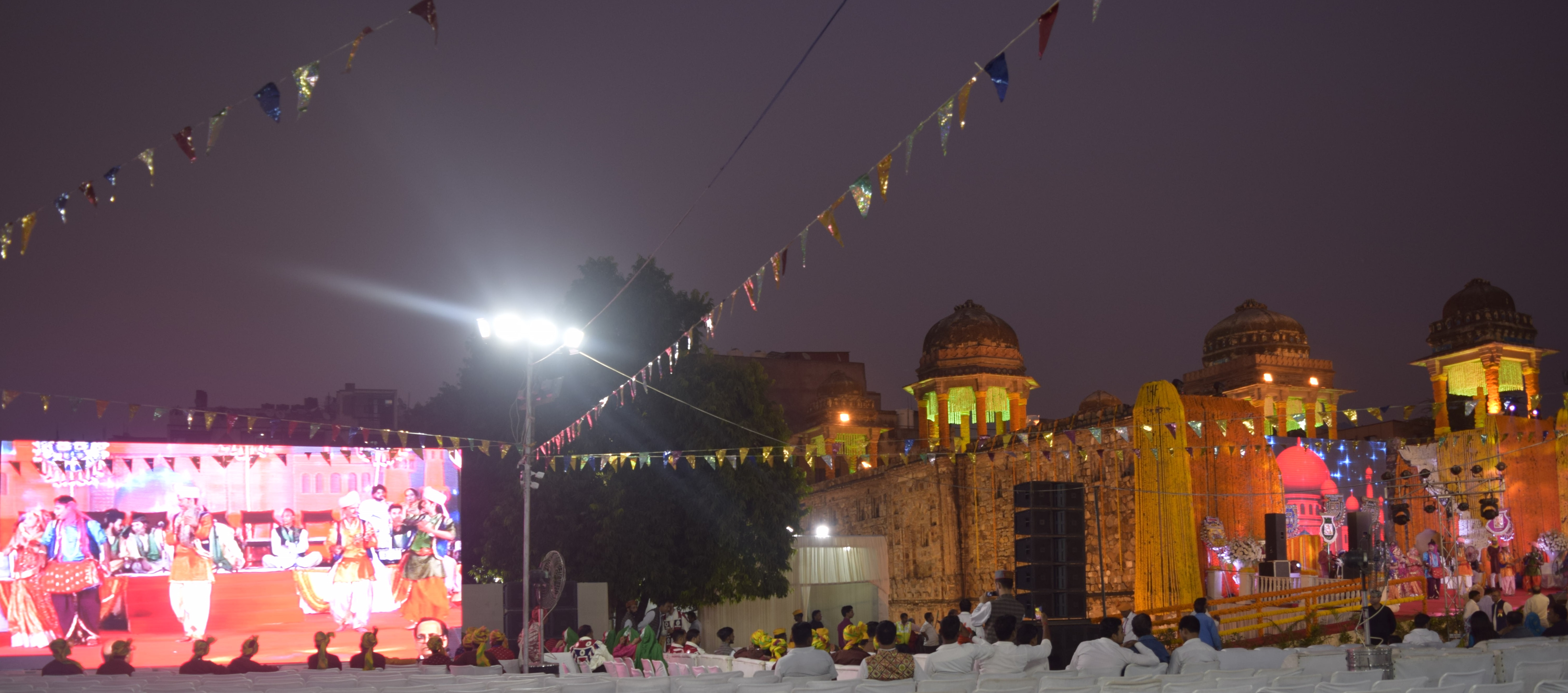
The above account of this year’s Phool walon ki sair, is repeated every year with very minor differences in terms of participating states, performances and state officials who visit the dargah and temple. In sociology, one of the ways in which “ritualism” has been understood is as “the re-enactment of past events to keep the memory alive”. If seen from this perspective, Phool walon ki sair is an annual civil ritual embedded with religious motifs, which has kept alive the events of the last years of the Mughal Empire. The people who conduct this “public ritual” are constant. The same set of people have been making and carrying the floral pankhaas over the years. The same groups of musicians have been playing the shehnai over the years. The head shehnai player has an important role in this festival. He is the one who ties a turban on the head of government officials in attendance. The head player told us that his father had been performing this duty before him.
As noted above, the festival has always been linked with power and politics. In the postcolonial context, successive governments promoted the festival as a symbol of communal harmony. Ever since its revival in 1961, the festival has only become deeply linked with political power to such a degree, that the festival today has become just another government event in the eyes of the participants. But this link with the state is also perceived as a way of continuing tradition. When asked about why the Lt Governor was coming to the dargah, one respondent answered that “Bakhtiar Kaki is the oldest patron saint of Delhi and whosoever rules Delhi must come to pay homage to the saint. From Illtutmish, to the Mughals, to the Britishers and finally to Lt Governor of Delhi, everyone comes here to pay their homage”.
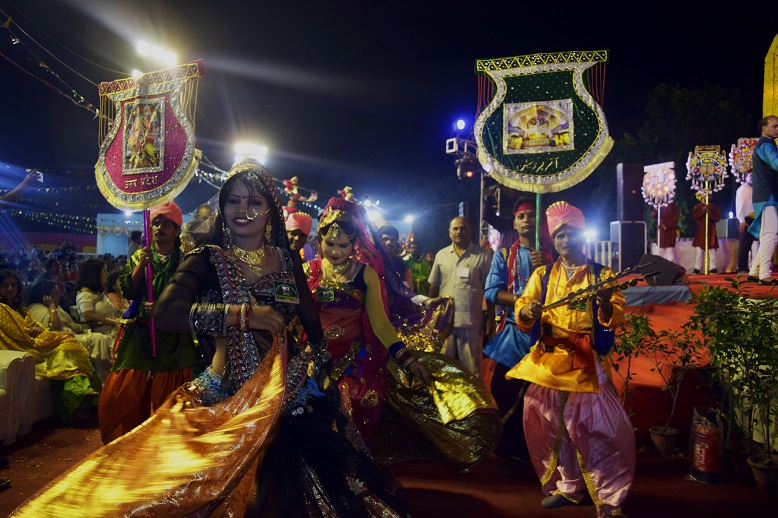
In the public imagination, the celebrations are linked with secularism. When asked why this festival is celebrated, one respondent at the dargah said, “Hindus and Muslims should live like brothers, all this communal hatred is not because common Hindus and Muslims hate each other, but it is because of the politicians of both religions”. While the hearings on the Ayodhya-Babri Masjid case was going on during the festival, another respondent at the Dargah said, “Look, in the event of violence, the Hindu pandit will go to Haridwar, while the maulana will fly to Saudi, but us common people have to live here. Instead of demanding for construction of masjid at Ayodhya, Muslims should focus on protecting their local mosques, which are in ruins, and Hindus should care for their local temples, which are also in ruins. They shouldn’t focus on a faraway temple because a majority of people from both communities visit their local temples and mosque”. Similarly, the priest at the temple also said that, “The purpose of this festival is to create communal harmony as we all are children of one god”.
But despite a longstanding socio-cultural history and enthusiastic state patronage, the festival is losing its sheen. This might be because of the same state patrons who have revived it. Over the last few years, the Delhi government has so actively involved itself, that people have started to think that it is merely a “government event”. We were not able to see much enthusiasm or excitement or even a festive mood. People did participate, but it appeared to be more in order to see the cultural performances and the political and administrative leaders in person than to do with the festival itself.
In contemporary times, when communal hatred is only growing with each passing day, the significance of a festival which has its origin in ideas of communal harmony becomes very important, and it becomes a site for the much needed inter-faith dialogue. Also, a festival like phool walon ki sair is important in itself for its historical significance. Therefore, the organisers, along with the state government and concerned citizens should focus more on making this extremely important public festival more participatory.




